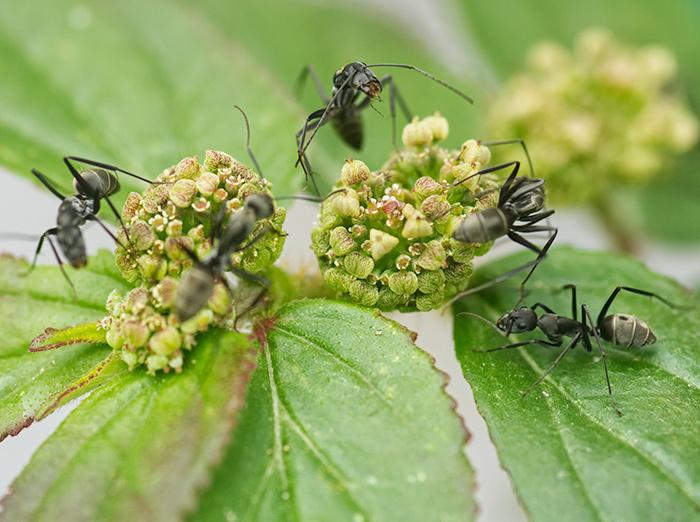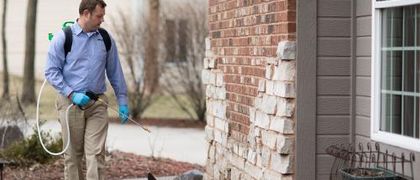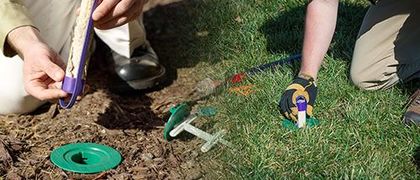What do odorous house ants look like?
- Size: Approximately 1/8 in.
- Color: Black or dark brown
- Body Structure: Head, thorax, and abdomen with a small node on the pedicel that is slightly hidden by the abdomen

Characteristics of odorous house ants
Odorous house ants are social insects that thrive in colonies, often with multiple queens and up to 100,000 worker ants in a single colony. Their name is derived from the fetid odor, similar to rotten coconut, that is released when these ants are crushed.
When are odorous house ants most active?
How are odorous house ant colonies formed?
Like other species of ants, odorous house ants typically establish new colonies after mating flight in late spring and early summer. In some cases, a queen may leave an existing colony with a group of workers to establish a new colony in a new location in a process called “budding”.
Where do odorous house ants nest?
Outdoors, odorous house ants commonly nest in mulch, rotting logs, boards, debris, and under sidewalks/concrete. Indoors, odorous house ants are often found nesting in wall voids, between window frames, and in cracks and crevices.
What do odorous house ants eat?
Odorous house ants typically feed on honeydew from aphids as well as dead insects. When they infest homes, they’ll look for sugary foods and meats.
Are odorous house ants dangerous?
Odorous house ants are considered nuisance ants because they do not cause damage to structures like carpenter ants. They are capable of biting, but most individuals do not experience a reaction. It should be noted that these ants do have a tendency to infest food packages and may contaminate surfaces where food is prepped.
Why do I have an odorous house ant infestation?
Since odorous house ants are so tiny, they’re able to slip inside homes relatively easily. Although they nest outdoors, they may inadvertently enter homes, or inclement weather, such as heavy rain may drive them indoors. If they find suitable nesting sites and food sources, they’re likely to stick around. Unfortunately, odorous house ants tend to travel in large numbers, and even though an infestation may seem to disappear they’re likely lurking about.
How do I get rid of odorous house ants?
For effective pest control services that exterminate odorous house ants, contact a licensed pest control company. At Miller Pest & Termites, we’ve been treating ants and other pest problems since 2001 and are ready to help you knock out odorous house ants!
How can I prevent an odorous house ant problem?
One way you can prevent odorous house ant infestations is by making sure any crumbs, spills, or other food residues, especially from sugary items, are cleaned up immediately. Other prevention tips include:
- Cut tree limbs and trim back shrubs and bushes so that they do not touch the exterior of the house
- Remove yard debris
- Store firewood away from the house and up off the ground
- Correct any moisture problems
- Caulk or seal off all potential entry points
- Remove food sources


Get Help Now!












